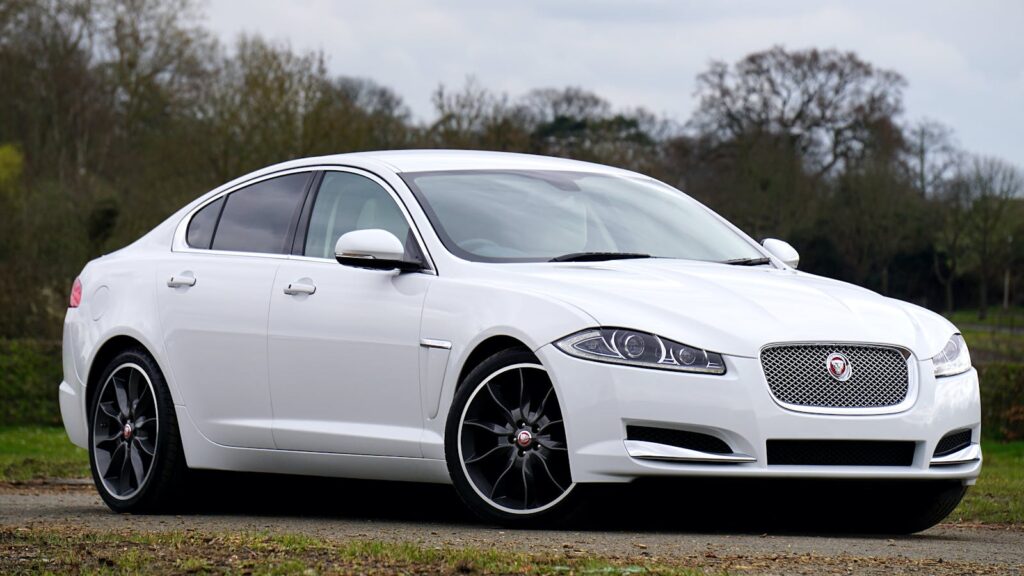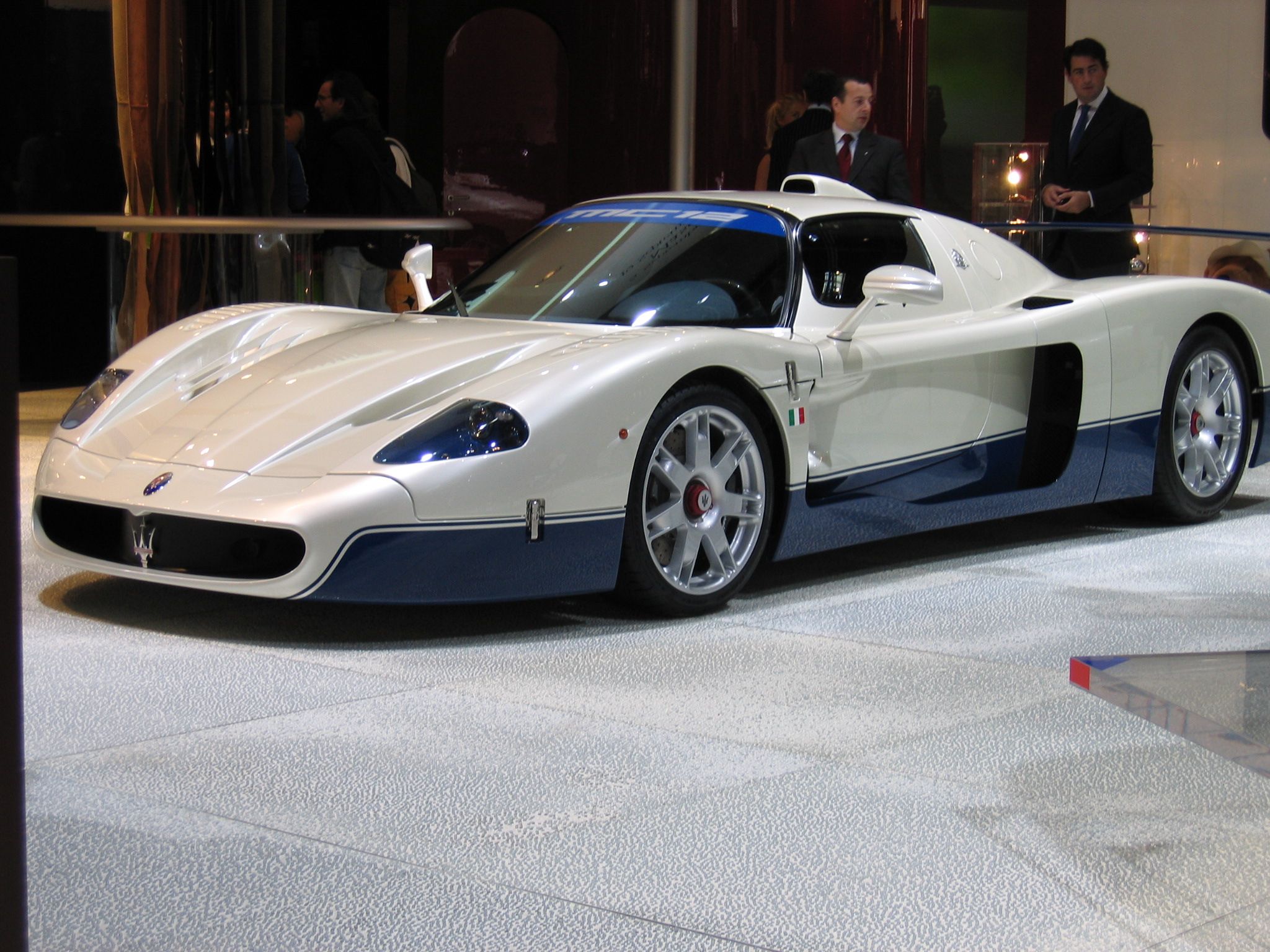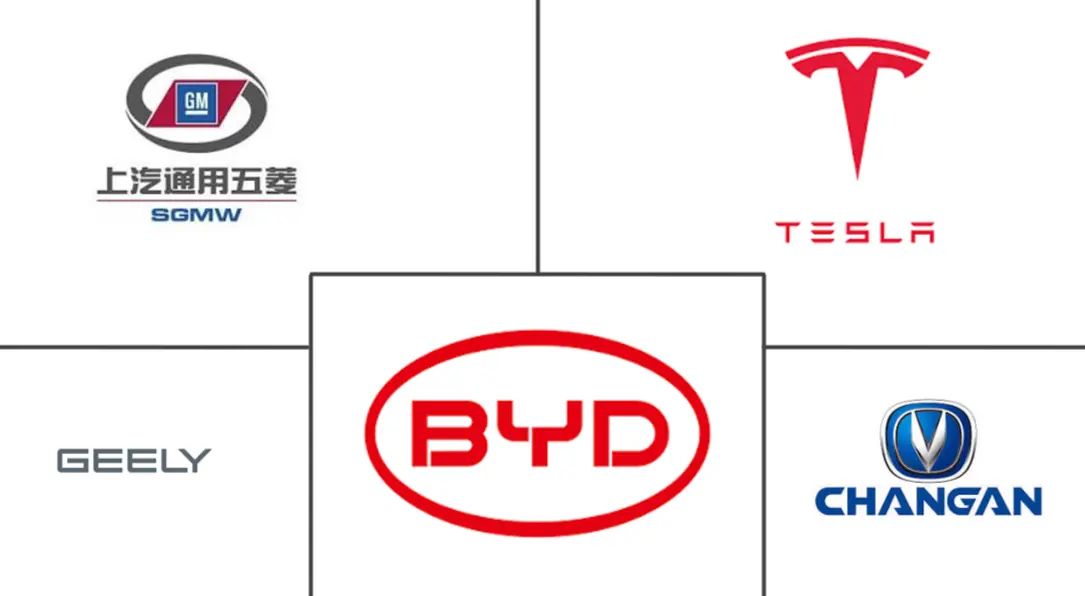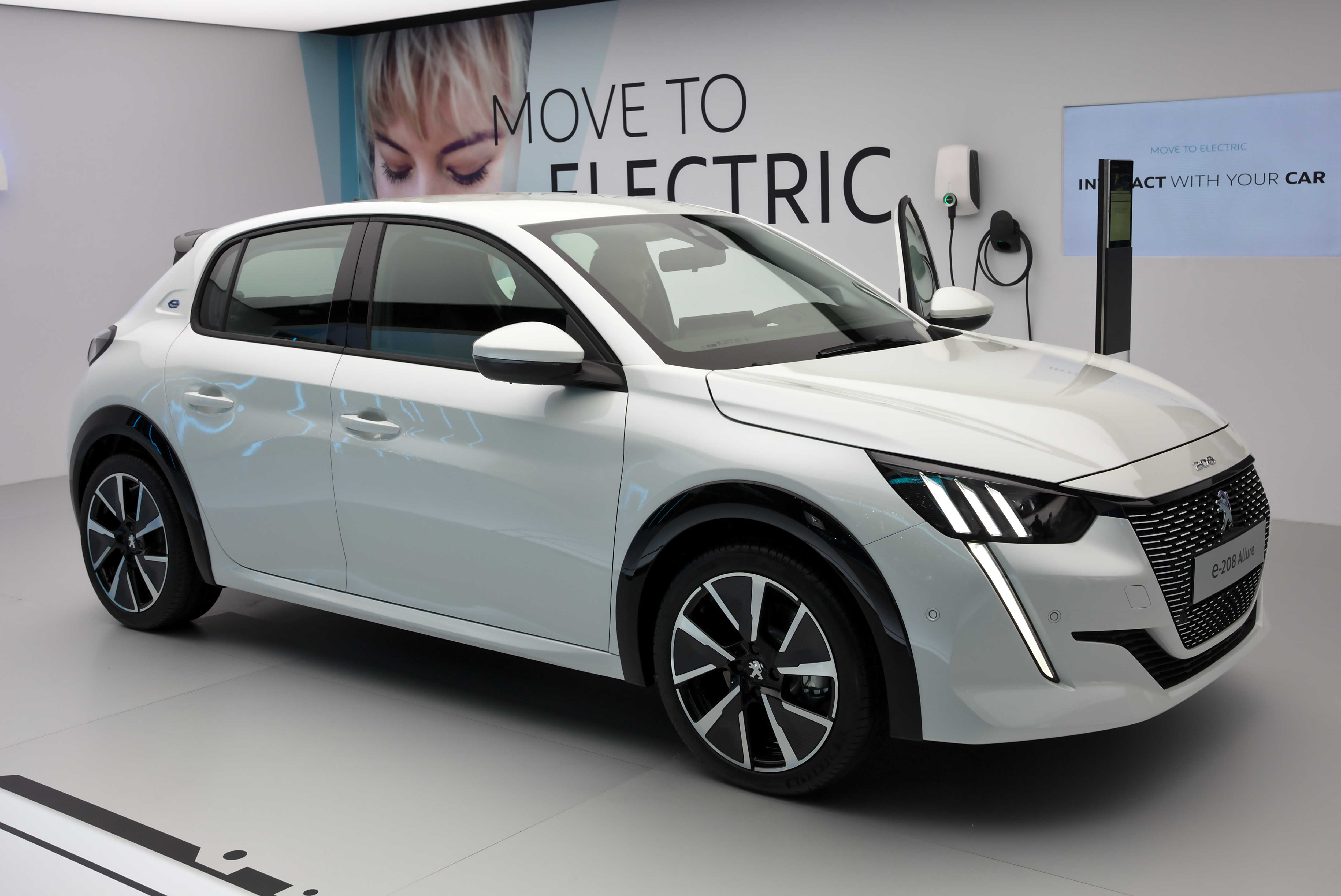
The allure of a new sedan can be powerful, promising a blend of comfort, practicality, and an enjoyable driving experience. However, the true measure of a vehicle’s worth often extends far beyond its initial showroom appeal. For many consumers, the dream of a sleek, efficient, and comfortable car can quickly transform into a financial nightmare as hidden costs emerge after just a few years of ownership.
Indeed, some sedans, while initially attractive, begin to drain owners’ wallets with frequent, expensive repairs and rapid depreciation once they pass their fifth year on the road. It’s a critical point in a car’s life cycle where manufacturing quality, engineering integrity, and the cost of parts and labor truly come into sharp focus. Identifying these potential money pits before purchase is crucial for any smart consumer looking to make a sound, long-term investment.
Our aim here is to cut through the marketing noise and deliver clear, actionable insights into which sedans demand careful consideration—or outright avoidance—for long-term ownership. By examining real-world reliability issues, maintenance expenses, and depreciation trends, we will uncover why certain models disappoint their owners with unexpected bills and diminished value, turning what should be a reliable asset into a regrettable financial burden.
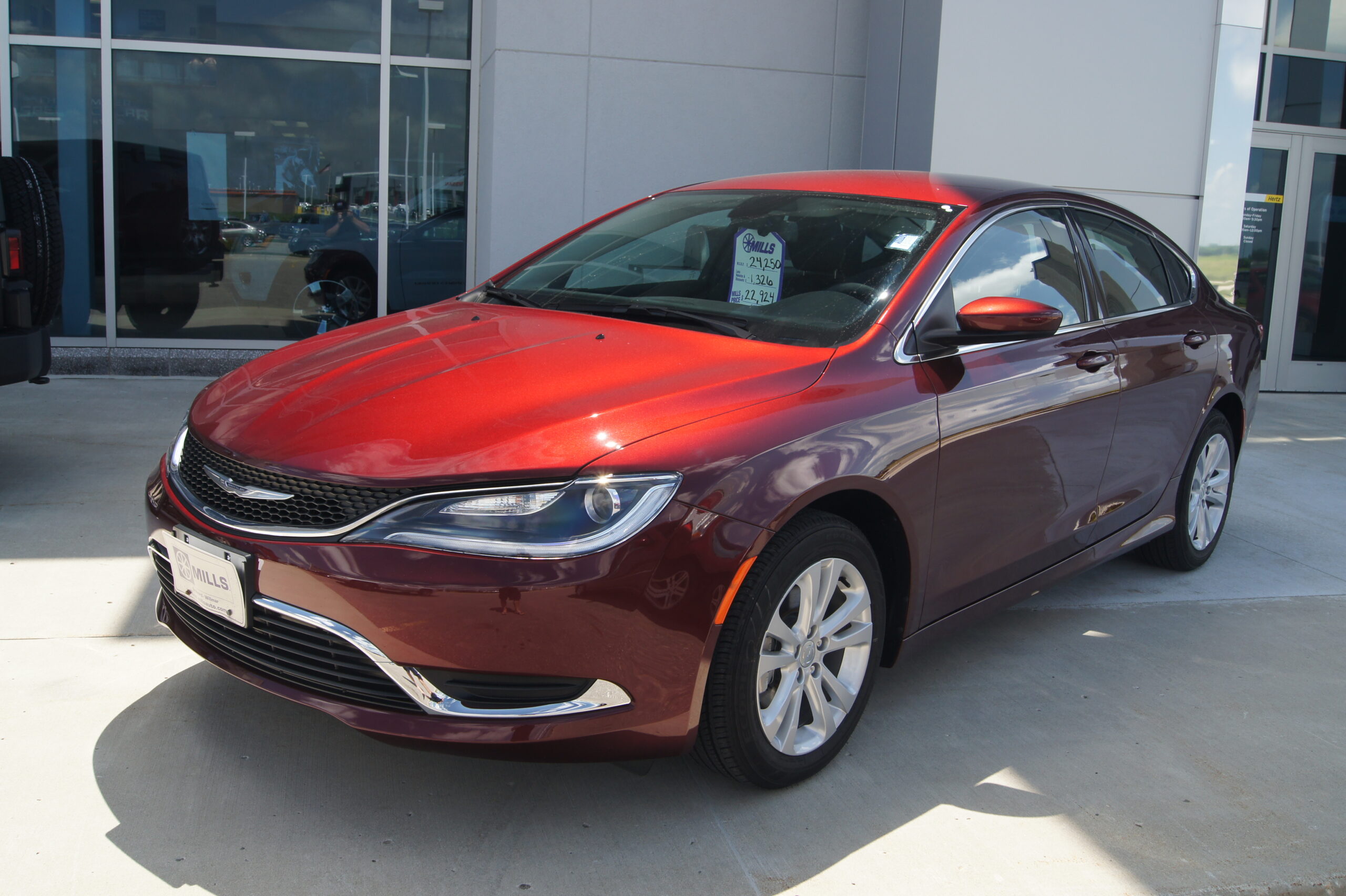
1. **Chrysler 200**The Chrysler 200 initially captured attention with its “sleek exterior design and attractive interior styling.” When it first rolled off the production lines, it presented itself as a stylish mid-size sedan poised to challenge more established contenders in its class. Many potential buyers were drawn in by its contemporary looks and perceived value, believing they were acquiring a chic yet sensible vehicle for their daily needs.
However, this initial attraction often faded quickly as owners began to experience a troubling pattern of long-term dependability issues. The car’s internal components and systems proved less robust than its outward appearance suggested, leading to a host of problems that significantly escalated ownership costs. These issues frequently surfaced well before or around the five-year mark, transforming the stylish sedan into a frustrating and costly proposition.
One of the most frequently cited and financially impactful problems with the Chrysler 200 centered on its transmission. Reports of various malfunctions, including “rough shifting, unexpected hesitation, and complete transmission failures,” were common across certain model years. A transmission repair is rarely inexpensive, and in many instances, the sheer “cost of fixing this single issue can equal the market value of the vehicle,” making such repairs economically unfeasible for owners.
Beyond the transmission, electrical system woes added another layer of complexity and expense to Chrysler 200 ownership. Owners reported a wide array of problems, from “malfunctioning infotainment systems” and “power window failures” to “unpredictable dashboard warnings.” These electrical glitches, while sometimes minor individually, were often “difficult to diagnose,” leading to repeated and costly visits to service centers without a definitive, lasting solution.
Compounding these mechanical and electrical challenges was the questionable durability of the interior materials. While the cabin offered an initially “pleasant” feel with “soft-touch materials and stylish design,” observations from owners suggested that “seats and trim pieces tend to wear down more quickly than those in competing models.” This rapid deterioration, combined with “cabin insulation also fails to block out as much road noise as buyers expect in this class,” further diminished the car’s perceived value and long-term comfort. Ultimately, the Chrysler 200’s chronic reliability issues and high repair costs contributed to a “low” resale value, making it a clear example of a sedan that fails to deliver on its initial promise of style and value.
Car Model Information: 2013 Chrysler 200 Touring
Name: Chrysler 200
Manufacturer: Chrysler
Production: 2010–2016
ModelYears: 2011–2017
Assembly: Sterling Heights, Michigan
Class: Mid-size car
Sp: us
Predecessor: Chrysler Sebring
Categories: 2010s cars, All articles with dead external links, All articles with unsourced statements, Articles with dead external links from July 2020, Articles with permanently dead external links
Summary: The Chrysler 200 is a mid-size sedan that was manufactured and marketed by Chrysler from model years 2011 to 2017 across two generations in four-door sedan and two-door convertible (first generation only) body styles.
The 200 nameplate debuted on the 200C, a prototype hybrid vehicle shown at the 2009 North American International Auto Show in Detroit and based on the Chrysler 300. The 200C concept was engineered to accept either traditional gasoline, hybrid or full-electric powertrains.
Get more information about: Chrysler 200
Buying a high-performing used car >>>
Brand: Chrysler Model: 200
Price: $7,788 Mileage: 117,030 mi.
Read more about: Buyer Beware: These 12 Crossovers Turn into Money Pits Past 80,000 Miles
2. **Jaguar XE**The Jaguar XE was introduced with the ambitious goal of bringing a distinct blend of “British luxury and sporty performance into the compact sedan segment.” It successfully delivered on its promise of an engaging driving experience, offering a “sharp handling, stylish design, and an upscale interior” that appealed to buyers seeking a premium alternative to its German rivals. The immediate impression was one of sophistication and dynamic capability, traits often associated with the Jaguar brand.
Yet, beneath its sleek exterior and responsive performance, the XE harbored a propensity for accumulating significant maintenance expenses, especially as it aged beyond its warranty period. The specialized engineering and premium components that contributed to its excellent driving dynamics also translated into higher costs when repairs became necessary. This reality often caught owners by surprise, as the initial joy of ownership gradually gave way to the burden of escalating upkeep.
One area of concern that emerged prematurely for many XE owners was the suspension system. While renowned for “delivering precise control and comfort when new,” reports indicated that it was prone to “develop problems sooner than expected.” The replacement of “worn suspension components” not only compromised the ride quality but also proved to be “costly to replace due to the specialized nature of the parts.” Such repairs frequently required dealership-level expertise and genuine Jaguar parts, further driving up the bills.
Electrical system failures were another common issue plaguing the Jaguar XE. Owners encountered problems such as “faulty sensors or infotainment glitches,” which are not only inconvenient but also “often require dealership-level attention” to diagnose and rectify. These complex electronic systems, while contributing to the XE’s luxurious feel and advanced features, became a significant liability when they malfunctioned, demanding expensive diagnostic and repair work.
Even the interior, initially praised for its quality, showed signs of premature wear. Some owners reported “premature wear on leather surfaces, trim, and buttons,” contradicting the expectation of lasting luxury. Furthermore, securing “replacement parts for interior components can be expensive, especially when ordered directly from Jaguar suppliers.” This combination of high repair costs for critical systems and general component wear, coupled with a typically steep depreciation for luxury sedans, made the Jaguar XE a challenging proposition for long-term ownership, especially for those unprepared for “premium-level maintenance costs.”
Car Model Information: 2020 Jaguar XE S
Sp: uk
Name: Jaguar XE (X760)
Manufacturer: Jaguar Land Rover
ModelCode: X760
Class: Compact executive car
Predecessor: Jaguar X-Type
BodyStyle: saloon (car)
Production: April 2015–2024
Aka: Jaguar XEL (China, LWB)
Assembly: ubl
Engine: ubl
Transmission: manual transmission,ZF 8HP transmission
Layout: FR layout
Platform: Jaguar Land Rover car platforms#D7a
Related: Jaguar F-Pace,Jaguar XF (X260),Range Rover Velar
Wheelbase: 2835 mm
Abbr: on
Length: 4672 mm
Width: 1850 mm
Height: 1416 mm
Weight: 1474 kg
Designer: Ian Callum
Drivetrain: Mild Hybrid
ModelYears: 2016–2024
Categories: 2020s cars, All-wheel-drive vehicles, Articles with short description, CS1: unfit URL, CS1 maint: archived copy as title
Summary: The Jaguar XE (X760) is a front engine, rear- or all-wheel drive four-door compact-executive saloon manufactured by Jaguar Land Rover and marketed under their Jaguar marque for model years 2016–2024 — across a single generation.
The successor to the X-Type, it was designed by Ian Callum and launched at the October 2014 Paris Motor Show. Production of the XE ceased in mid-2024.
The XE is noted for its aluminium suspension componentry as well as its bonded and riveted aluminium unitary monocoque structure, without need for a reinforcing space frame, pioneered by Jaguar on their third generation XJ-series (X350; from 2002) — the first in its segment.
Get more information about: Jaguar XE
Buying a high-performing used car >>>
Brand: Jaguar Model: XE
Price: $23,716 Mileage: 39,314 mi.
Read more about: Beyond the Ring: An Exclusive Deep Dive into Floyd Mayweather’s Multi-Million Dollar Automotive Sanctuary
3. **Volkswagen Passat (Certain Model Years)**The Volkswagen Passat has a long and varied history within the mid-size sedan market, recognized for its comfortable interior and solid highway performance when operating as intended. Its reputation, however, is inconsistent; some production years have demonstrated “solid reliability,” while others have unfortunately “leaving owners with a series of costly problems.” This variability means that purchasing a used Passat without thorough research can essentially be a “gamble,” where the long-term financial outcome is far from certain.
Among the most concerning issues reported for specific Passat model years are transmission problems. Owners have detailed various malfunctions, including “slipping gears, hard shifting, and transmission control module failures.” These issues are not only disruptive to the driving experience but are also notoriously expensive to repair or replace, often presenting a significant financial hit. Such critical component failures underscore the potential for the Passat to quickly become a money pit.
In addition to transmission woes, certain turbocharged engines found in some Passat models have exhibited “premature turbocharger wear.” The turbocharger is a vital component for performance and efficiency, and its failure necessitates costly repairs that go beyond routine maintenance. These engine-related problems can materialize unexpectedly, placing a substantial financial burden on owners who had anticipated a more reliable vehicle.
Electrical issues also contribute to the Passat’s potential for high ownership costs in problem-prone years. Owners have reported a range of annoyances, such as “problems with sensors, window regulators, and central locking systems.” While these might initially seem like minor inconveniences, “repeated failures can add up in repair costs,” requiring multiple trips to the mechanic and persistent drains on finances. The cumulative effect of these electrical glitches can transform a tolerable issue into a significant expenditure.
Despite its appealing qualities like a “comfortable interior, good ride quality, and solid highway performance when functioning properly,” the financial risks associated with certain Passat model years cannot be overlooked. The cost of spare parts for “European car parts are often more expensive than those for Japanese or American sedans.” Furthermore, not every mechanic is “equipped to work on Volkswagen systems,” which can force owners to “visit specialized shops or dealerships,” incurring higher labor rates. This combination of expensive parts, specialized labor, and inconsistent reliability makes specific Volkswagen Passat models a cautionary tale for long-term ownership.
Car Model Information: 2022 Volkswagen Passat 2.0T SE
Name: Volkswagen Passat
Caption: Passat B9
Manufacturer: Volkswagen
Aka: Volkswagen Dasher,Volkswagen Quantum,Volkswagen Santana,Volkswagen Corsar,Volkswagen Magotan (China),Volkswagen Carat
Production: 1973–present
Class: Mid-size car
Layout: Front-engine, front-wheel-drive layout
Predecessor: Volkswagen Type 4,Volkswagen Type 3,Volkswagen K70
Successor: Volkswagen ID.7
Sp: uk
Categories: 1970s cars, 1980s cars, 1990s cars, 2000s cars, 2010s cars
Summary: The Volkswagen Passat is a nameplate of large family cars (D-segment) manufactured and marketed by the German automobile manufacturer Volkswagen since 1973 and also marketed variously as the Dasher, Santana, Quantum, Magotan, Corsar and Carat — in saloon, estate, and hatchback body styles.
A “four-door coupé” variant of the Passat with a lower roof was released in the North American market in 2008 as the Passat CC, which was then renamed to Volkswagen CC. The CC was succeeded by the Arteon in 2017.
In January 2011, Volkswagen introduced a separate Passat model line, internally designated “Volkswagen New Midsize Sedan” or NMS, that was manufactured in the US at the Chattanooga assembly plant and in China at Nanjing by SAIC-Volkswagen. Developed to increase Volkswagen sales in North America, the Passat NMS is larger and costs less to produce, and is sold in the North America, South Korea, China, and Middle East. The separate B8 Passat model entered production, based on the MQB platform.
In 2019, the Passat NMS program was split into two as the North American one continued being produced on an older platform while the Chinese Passat moved on to the MQB platform, which resulted in Volkswagen marketing three models under the Passat nameplate globally at that time. The North American Passat was discontinued after the 2022 model year.
Volkswagen ended the production of the saloon Passat for the European market in 2022. The B9 Passat, released in 2023, is only available in an estate body style. The Passat continues to be available as a saloon in China.
The “Passat” is one of several Volkswagen models named after a wind: “Passat” is the usual German word for “Trade winds”.
Get more information about: Volkswagen Passat
Buying a high-performing used car >>>
Brand: Volkswagen Model: Passat
Price: $16,148 Mileage: 76,970 mi.
Read more about: I’m a Mechanic: The 5 Cars I Love to See in My Shop (and the 5 I Warn You to Avoid!)

4. **BMW 5 Series (Older Models)**For decades, the BMW 5 Series has stood as a benchmark in the luxury sedan segment, celebrated for its exceptional ability to “balance performance with comfort.” Older models, particularly those that have crossed the decade mark in age, can still offer an undeniably “rewarding driving experience with precise handling and powerful engines.” The prestige and driving dynamics associated with the brand remain captivating, even in a pre-owned vehicle, drawing in enthusiasts who appreciate engineering excellence.
However, the allure of an older BMW 5 Series comes with a significant caveat: “the costs of ownership rise steeply as these vehicles age.” What begins as an opportunity to own a luxury vehicle at a more accessible price point can quickly evolve into a substantial financial commitment. The sophisticated engineering and premium components that define the BMW driving experience also demand a higher level of maintenance and repair expense, which only intensifies with mileage and years.
Among the most common and expensive issues found in older 5 Series models are “cooling system failures.” This system, critical for engine health, “has a reputation for needing serious repairs or replacements after a certain mileage,” leading to substantial bills. Furthermore, “worn suspension components” are another frequent problem; repairs are often “expensive due to the brand’s engineering design, which often requires replacing multiple components at once,” rather than just a single part, amplifying the cost.
Electronic malfunctions also pose a consistent challenge as these luxury sedans age. “Electronic systems, including navigation units, climate controls, and driver assistance features,” are prone to failure. Diagnosing and repairing these complex systems often necessitates “specialized equipment and knowledge,” further contributing to elevated repair costs. Each module and sensor contributes to a web of potential points of failure, each with a premium price tag for rectification.
Beyond unexpected repairs, “routine maintenance for a BMW is more expensive than for non-luxury sedans.” Basic services like “oil changes, brake replacements, and other basic services cost more due to the premium parts and labour rates associated with the brand.” The combination of these factors means that while an older BMW 5 Series can still deliver a special driving feel, it is “best suited for owners who are willing and able to budget generously for upkeep.” For others, it quickly becomes an undeniable money pit, with its allure overshadowed by relentless repair bills.
Car Model Information: 2024 Volkswagen Tiguan 2.0T SE R-Line Black
Name: BMW 5 Series
Manufacturer: BMW
Production: 1972–present
Class: Executive car
BodyStyle: Sedan (automobile)
Layout: Front-engine, rear-wheel-drive,Front-engine, all-wheel-drive
Predecessor: BMW New Class
Categories: 1980s cars, 1990s cars, 2000s cars, 2010s cars, 2020s cars
Summary: The BMW 5 Series is an executive car manufactured and marketed by BMW since 1972. It is the successor to the BMW New Class sedans and is currently in its eighth generation. The car is sold as either a sedan or, since 1991, a station wagon (marketed as “Touring”). A 5-door fastback (marketed as “Gran Turismo”) was sold between 2009 and 2017. Each successive generation has been given an internal G-code designation since 2017. Previously, a F-code designation was used between 2010 and 2016, while an E-code designation was used between 1972 and 2010. These are used to distinguish each model and generation from each other.
The first generation of the 5 Series was powered by naturally aspirated four-cylinder and six-cylinder petrol engines. Following generations have been powered by four-cylinder, six-cylinder, V8 and V10 engines that are either naturally aspirated or turbocharged. Since 1982, diesel engines have been included in the 5 Series range.
The 5 Series is BMW’s second-best-selling model after the 3 Series. On 29 January 2008, the 5 millionth 5 Series was manufactured, a 530d sedan in Carbon Black Metallic. It is BMW’s oldest nameplate still in production and the first model line to use “Series” in the name, debuting the three-digit model naming convention still used today. Since the E28, all generations of 5 Series have included an “M” model, called the BMW M5.
Get more information about: BMW 5 Series
Buying a high-performing used car >>>
Brand: BMW Model: 5 Series
Price: $27,995 Mileage: 9,546 mi.
Read more about: I’m a Mechanic: The 5 Cars I Love to See in My Shop (and the 5 I Warn You to Avoid!)
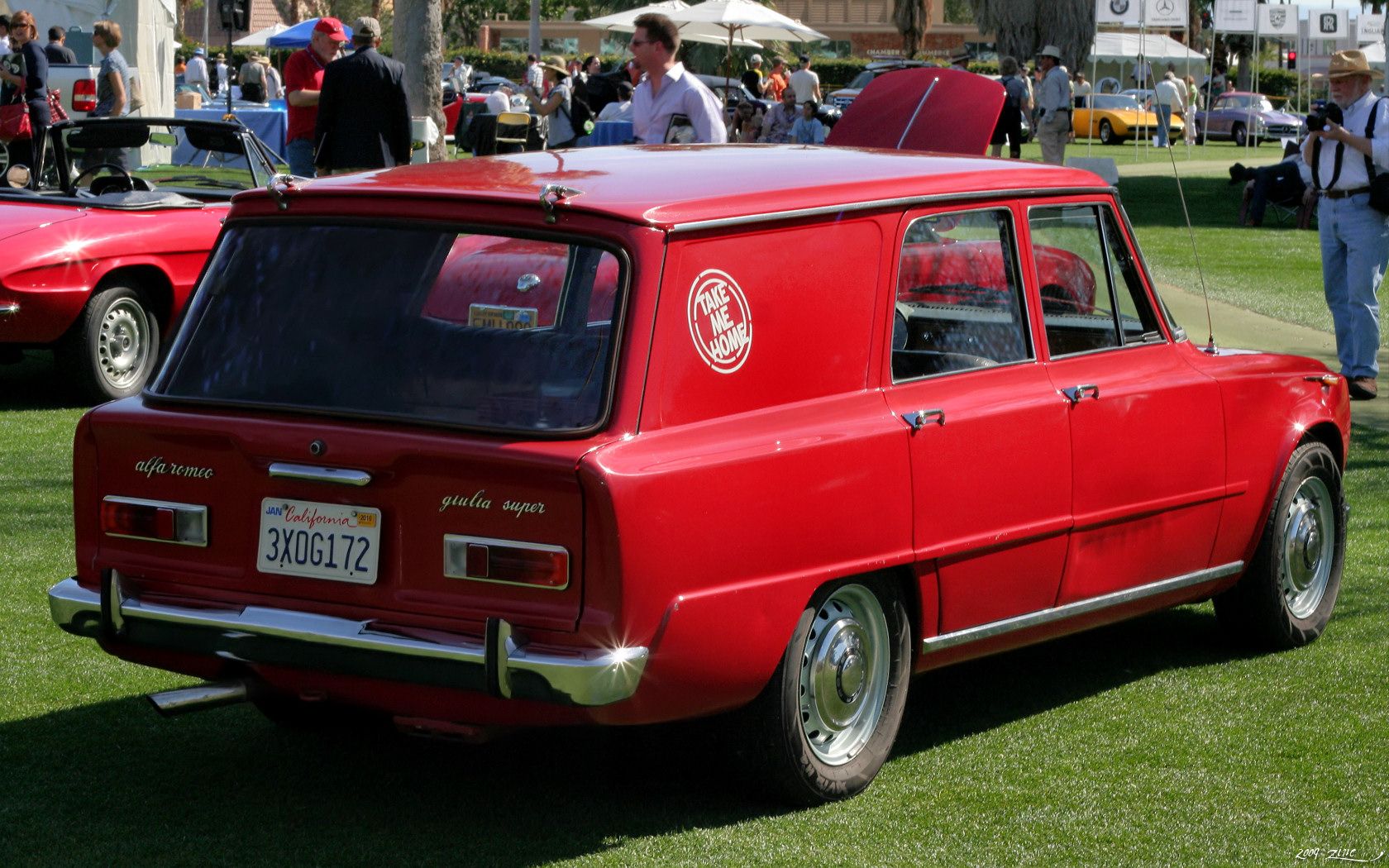
5. **Alfa Romeo Giulia**The Alfa Romeo Giulia burst onto the scene to critical acclaim, lauded for its “sharp handling, stylish appearance, and engaging driving dynamics.” It successfully injected a sense of passion and excitement into the sedan market, offering a unique driving character that many competitors struggled to match. For those who prioritize a visceral connection with the road and a distinctive aesthetic, the Giulia promised an exhilarating ownership experience unlike any other.
However, the emotional appeal of the Giulia often comes hand-in-hand with an ownership experience that frequently involves “dealing with frequent and sometimes unpredictable mechanical issues.” The very characteristics that make it thrilling—its performance tuning and advanced systems—also contribute to its potential for costly and frustrating reliability problems. The initial thrill can be tempered by a recurring need for attention from service centers.
One of the “most common complaints” among Giulia owners points to “electrical system failures.” These issues manifest in various forms, from “malfunctioning sensors” and “infotainment freezes” to “warning lights appearing without a clear cause.” Such problems can be notoriously difficult to diagnose and rectify, often requiring “repeated visits to service centers” and extended periods of downtime, adding significant inconvenience and expense.
Drivetrain issues have also been a noted area of concern, with reports of “transmission problems and differential noise.” While the Giulia’s spirited performance is part of its charm, the intensive demands placed on its components can lead to “faster wear and tear” than might be expected in a less performance-oriented vehicle. These sophisticated mechanical systems, when they fail, demand specialized attention and premium parts.
Adding to the financial burden is the challenge of “parts availability,” which “can be a challenge in certain areas, especially in smaller markets where Alfa Romeo service centers are scarce.” This can result in “longer repair times and higher costs,” as specialized parts need to be sourced and only specific technicians are qualified for the work. Even “routine maintenance tends to cost more than for mainstream brands.” The quick depreciation of the Giulia further cements its status as a potential money pit, making it a purchase primarily for those “passionate about driving and willing to accept the financial risks,” rather than those seeking steady, reliable long-term value.
Having identified sedans that can quickly deplete your savings, it’s equally important to highlight those that consistently deliver value and reliability for the long haul. Many buyers seek a vehicle that combines comfort, practicality, and an enjoyable driving experience without the constant worry of unexpected repairs. Fortunately, several models stand out as benchmarks for smart, long-term investments, earning their reputation through robust engineering, manageable upkeep, and strong resale values.
These are the sedans that owners are often happy to keep for a decade or more, proving that thoughtful design and a focus on durability can lead to significant financial peace of mind. They represent the other side of the ownership coin, where consistent performance and predictable costs create a rewarding experience, transforming a daily driver into a trusted companion that saves you money rather than costing it.
Car Model Information: 2024 Volkswagen Tiguan 2.0T SE R-Line Black
Name: Alfa Romeo Giulia (Type 105)
Caption: Alfa Romeo Giulia Super
Manufacturer: Alfa Romeo
Production: 1962–1978
Assembly: Portello (district of Milan),Alfa Romeo Portello Plant,Milan
Designer: Giuseppe Scarnati
Class: Compact executive car
BodyStyle: notchback,Sedan (car)
Layout: Front-engine, rear-wheel-drive layout
Related: Alfa Romeo 105/115 Series Coupés,Alfa Romeo 1750 Berlina,Alfa Romeo Gran Sport Quattroruote,Alfa Romeo Spider
Engine: Alfa Romeo Twin Cam engine,1.6 L Twin Cam I4 (petrol),Perkins Engines
Transmission: Manual transmission
Wheelbase: 2510 mm
Abbr: on
Length: 4140 mm
Width: 1560 mm
Height: 1430 mm
Weight: convert
Predecessor: Alfa Romeo Giulietta (750/101)
Successor: Alfa Romeo Giulietta (116)
Sp: uk
Categories: 1970s cars, Alfa Romeo vehicles, Articles with short description, CS1 Italian-language sources (it), Cars introduced in 1962
Summary: Alfa Romeo Giulia (Italian pronunciation: [ˈdʒuːlja]) is the name of three not directly related model (line)s from Italian carmaker Alfa Romeo. The first were the four-door Type 105 entry-level compact executive sports sedans produced from 1962 to 1978; the second are the updated (mainly up-engined) Spider, Sprint, and Sprint Speciale Alfa Giuliettas, and in 2015, Alfa Romeo revived the Giulia name, again for a compact executive car (type 952).
Alfa Romeo was one of the first mainstream manufacturers to put a powerful engine in a light-weight 1 tonne (2,205 lb) four-door car for mass production. The Type 105 Giulia was equipped with a light alloy twin overhead camshaft four-cylinder engine similar to that of the earlier Giulietta (750/101) range, available in 1.3-litre (1,290 cc) and 1.6-litre (1,570 cc) versions. Various configurations of carburetors and tuning produced power outputs from about 80 to about 110 bhp (55 to 75 kW), coupled in most cases to 5-speed manual transmission.
Giulia sedans were noted for lively handling and impressive acceleration among small European four-door sedans of their era, especially considering modest engine sizes offered. The popular Super version with the twin carburettor 1.6 litre engine had a top speed of 170 km/h (106 mph) and accelerated from 0 to 100 km/h (62 mph) in about 12 seconds, better than many sports cars of the late 1960s and early 1970s. When leaving the factory all variations of the Giulia originally fitted either Pirelli Cinturato 165HR14 or 155HR15 tyres (CA67).
The styling of the three-box four-door sedan was somewhat wanting, with its three main volumes all truly square and boxy, softened only by detailing of the front and bonnet, roofline, and boot. Using a wind tunnel during development helped designers to find a remarkably aerodynamic shape with a drag coefficient of Cd=0.34, particularly low for a saloon of the era.
The Giulia Spider was succeeded by the Alfa Romeo Spider (105/115) in 1966.
Get more information about: Alfa Romeo Giulia
Buying a high-performing used car >>>
Brand: Alfa Romeo Model: Giulia
Price: $27,995 Mileage: 9,546 mi.
Read more about: The Real Cost of Speed: 14 Sports Cars & What Financial Experts REALLY Think About Your Investment
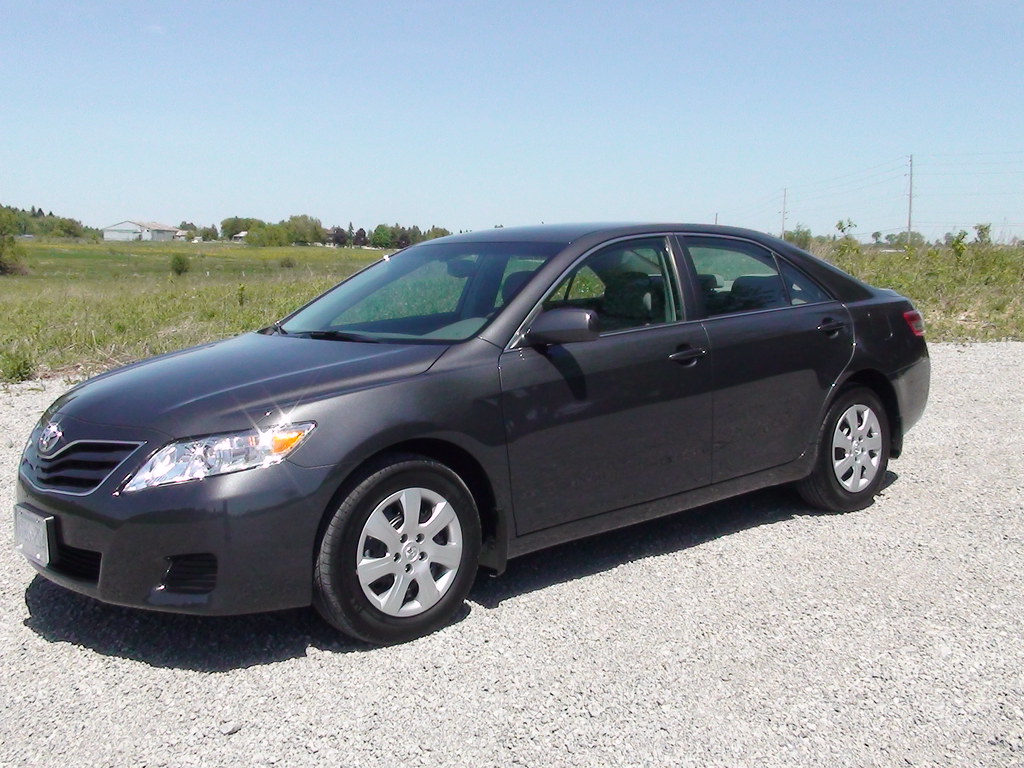
6. **Toyota Camry**The Toyota Camry has solidified its position over many decades as one of the most reliable and practical mid-size sedans available on the market. Its consistent performance means owners frequently keep their Camrys for well over a decade, with numerous reports of these vehicles reaching 250,000 miles without the need for major repairs. This exceptional longevity is a direct result of Toyota’s commitment to a balanced design that prioritizes proven technology and avoids pushing beyond established limits.
The engineering philosophy behind the Camry is both straightforward and remarkably effective. Its engines are precisely tuned to deliver dependable performance alongside impressive fuel economy, making the car a versatile choice for everything from daily commutes to extended road trips. The transmission operates with notable smoothness, and the suspension system strikes an excellent balance, providing comfort without sacrificing responsiveness.
Inside, the Camry offers generous space for all passengers, including ample room in the rear seats, ensuring comfort on longer journeys. The cabin materials are specifically chosen for their durability, designed to withstand the rigors of daily use over many years. Furthermore, the controls are intuitively arranged, making them easy to understand and operate for drivers of all experience levels.
A significant advantage of owning a Camry is its strong resale value. This is largely due to the widespread trust buyers place in the Camry’s long-standing track record of reliability, allowing it to command higher prices in the used market compared to less dependable alternatives. Parts are readily available and affordably priced, which helps to keep servicing costs consistently low. Owners frequently report that routine maintenance such as oil changes, basic fluid replacements, and brake servicing is sufficient to keep their Camry running optimally, affirming its status as a sedan that reliably rewards its owner for many years.
Car Model Information: 2019 Toyota Camry LE
Name: Toyota Camry
Caption: 2018 Toyota Camry Ascent (ASV70, Australia)
Manufacturer: Toyota
Production: March 1982 – present
Aka: ubl
Class: ubl
Layout: ubl
Predecessor: ubl
Successor: Toyota Avensis (T250)
Categories: 1990s cars, 2000s cars, 2010s cars, 2020s cars, All-wheel-drive vehicles
Summary: The Toyota Camry is an automobile sold internationally by the Japanese auto manufacturer Toyota since 1982, spanning multiple generations. Originally compact in size (narrow-body), the Camry has grown since the 1990s to fit the mid-size classification (wide-body)—although the two widths co-existed in that decade. Since the release of the wide-bodied versions, Camry has been extolled by Toyota as the firm’s second “world car” after the Corolla. As of 2022, the Camry is positioned above the Corolla and below the Avalon or Crown in several markets. In Japan, the Camry was once exclusive to Toyota Corolla Store retail dealerships. Narrow-body cars also spawned a rebadged sibling in Japan, the Toyota Vista—also introduced in 1982 and sold at Toyota Vista Store locations. Diesel fuel versions have previously retailed at Toyota Diesel Store. The Vista Ardeo was a wagon version of the Vista V50.
Get more information about: Toyota Camry
Buying a high-performing used car >>>
Brand: Toyota Model: Camry
Price: $19,591 Mileage: 55,419 mi.
Read more about: Accident-Proof Rides: Unveiling 14 Cars Secretly Engineered to Transform Even the Most Terrible Drivers into Confident Road Warriors
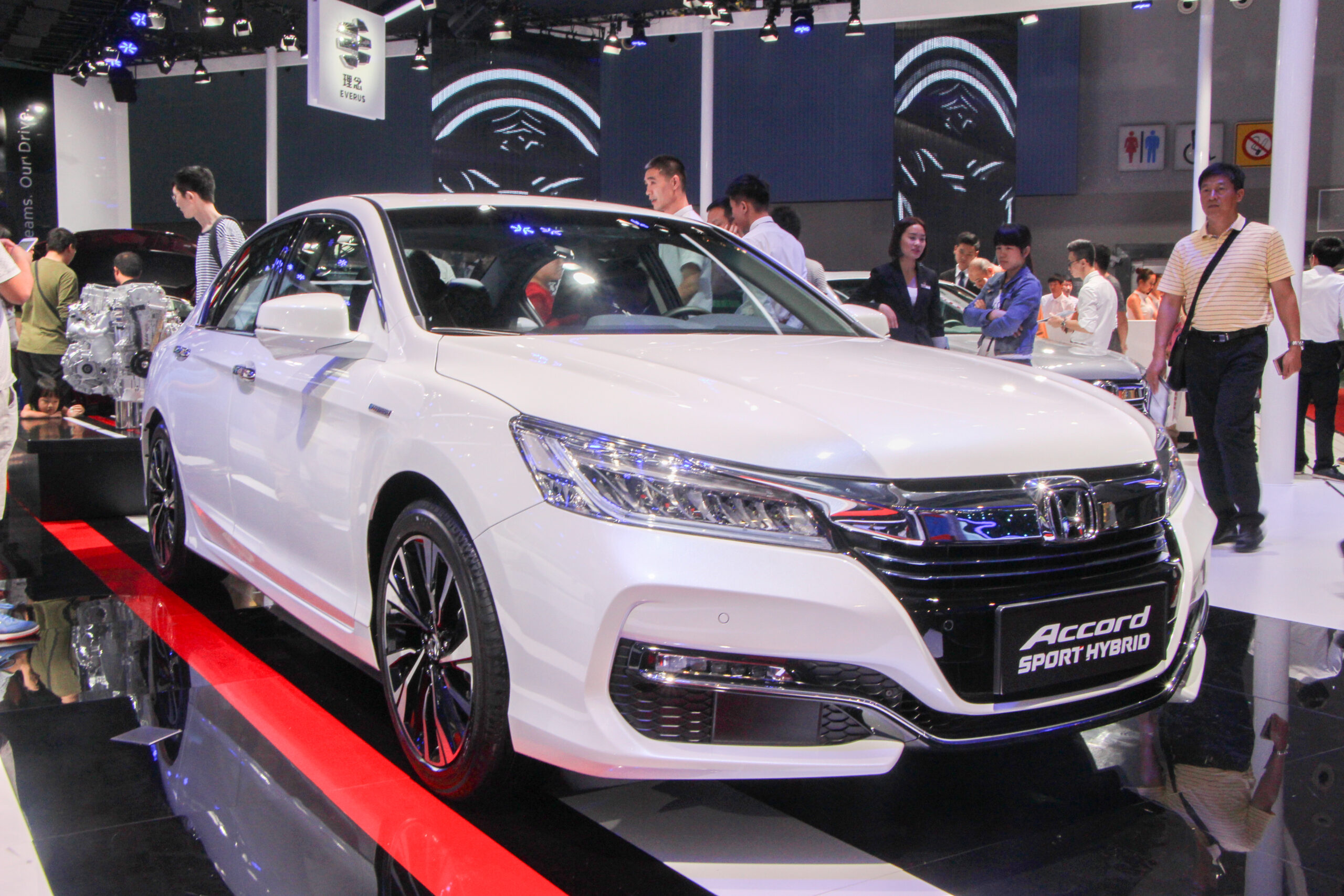
7. **Honda Accord**For discerning drivers seeking a sedan that expertly blends sharp driving performance with unwavering dependability, the Honda Accord has consistently been a top choice. Renowned for its engaging handling, comfortable ride, and a surprisingly spacious interior, the Accord has repeatedly demonstrated its capacity to remain in excellent service for well over a decade when provided with regular and appropriate care.
Honda meticulously constructs the Accord with a suspension system designed to deliver outstanding stability at high speeds, while simultaneously maintaining its responsiveness in the varied conditions of city traffic. The steering system is characterized by its precision, instilling confidence in the driver whether navigating tight corners or executing lane changes on bustling highways. Furthermore, the brakes are consistently strong and predictable, significantly enhancing the overall sense of control.
The cabin of the Accord is another key factor contributing to its enduring popularity. Honda utilizes high-quality materials that are built to withstand the demands of daily use, and the interior layout is both simple in its presentation and attractive in its design. The seats provide excellent support for both brief commutes and extended journeys, with the rear seating area offering sufficient space for adult passengers to travel comfortably, a testament to its thoughtful design.
One of the Accord’s most compelling strengths is its exceptional long-term value. Given its extensive history of dependable engines and transmissions, pre-owned Accords command a higher price in the used market from buyers who recognize and appreciate this reliability. This translates into better resale returns for owners, often surpassing what they might receive from other sedans in the same class, making it a financially astute choice.
The Accord also consistently delivers strong fuel economy, and its servicing requirements are straightforward for the vast majority of mechanics. Replacement parts are widely available across the country and are reasonably priced, which plays a crucial role in keeping ongoing ownership costs low. For drivers who desire a vehicle that harmonizes an enjoyable driving experience with sensible, long-term ownership, the Honda Accord stands out as a sedan that consistently delivers satisfaction for many years.
Car Model Information: 2016 Honda Accord LX
Name: Honda Accord
Caption: 2023 Honda Accord LX (US)
Alt: Front three-quarter view of a front-engined four-door car.
Manufacturer: Honda
Production: 1976–present
Class: Compact car
BodyStyle: hatchback
Layout: Front-engine, front-wheel-drive layout
Predecessor: Honda 1300
Categories: 1980s cars, 1990s cars, 2000s cars, 2010s cars, 2020s cars
Summary: The Honda Accord, also known as the Honda Inspire in Japan and China for certain generations, is a series of automobiles manufactured by Honda since 1976, best known for its four-door sedan variant, which has been one of the best-selling cars in the United States since 1989. The Accord nameplate has been applied to a variety of vehicles worldwide, including coupes, station wagons, hatchbacks and a Honda Crosstour crossover.
Get more information about: Honda Accord
Buying a high-performing used car >>>
Brand: Honda Model: Accord
Price: $15,399 Mileage: 97,050 mi.
Read more about: From Billionaires to Royals: 14 Mega-Rich Celebrities Who Opt for Totally Humble Cars (And We’re Obsessed With Why!)
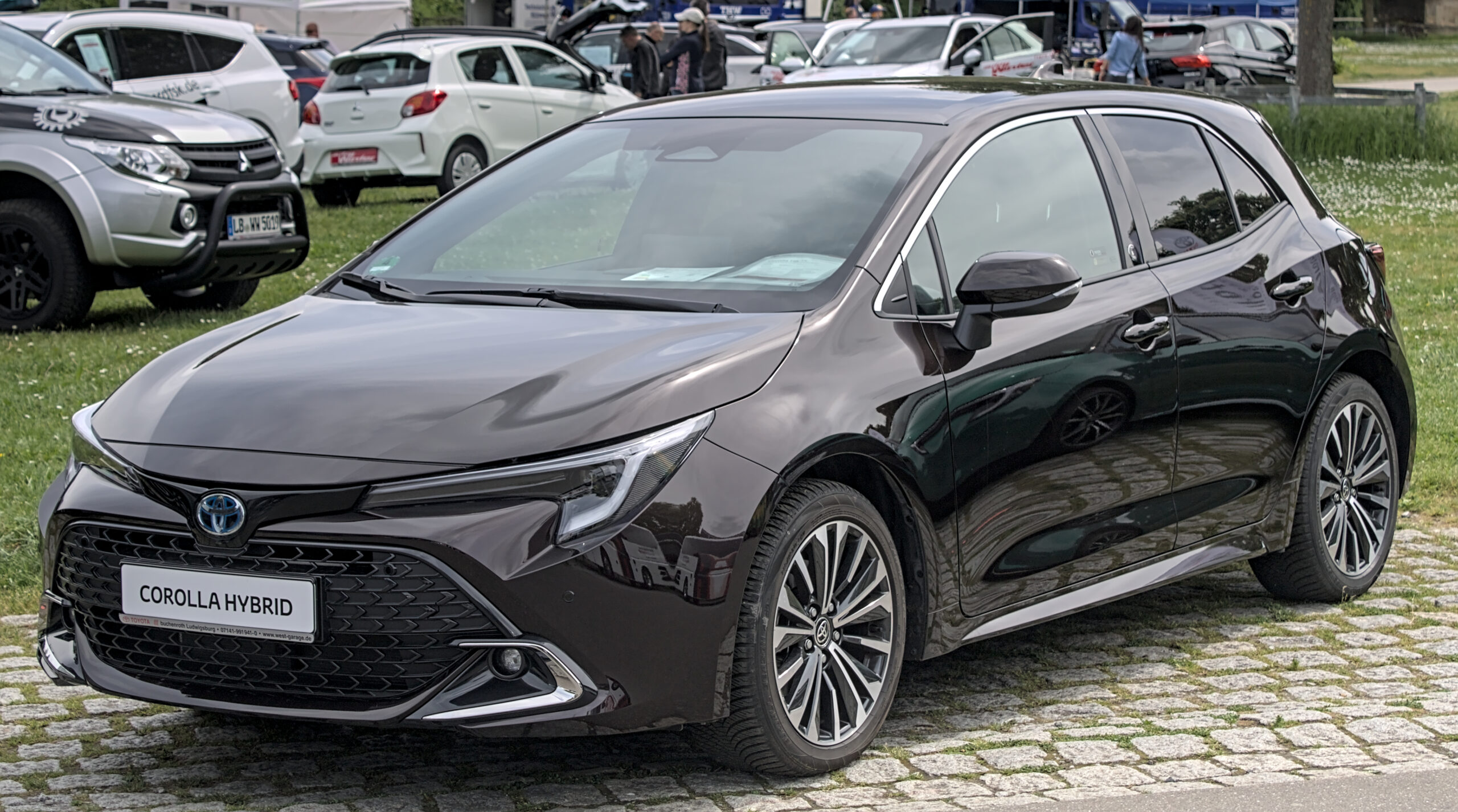
8. **Toyota Corolla**The Toyota Corolla, while typically smaller than many mid-size sedans, boasts an impressive and extensive record as one of the most dependable compact cars available on the market. Its engineering is characterized by simplicity and efficiency, which translates into remarkably low operating costs and makes it an exceptionally smart choice for anyone prioritizing a trouble-free driving experience without unnecessary complications.
Corolla owners frequently share reports of their vehicles continuing to run smoothly and reliably well beyond the 200,000-mile mark, often requiring only routine servicing to maintain peak performance. Toyota has deliberately maintained the Corolla’s design as both simple and efficient, consciously avoiding complex features that could otherwise lead to costly and frequent repairs, thereby enhancing its long-term reliability.
The compact size of the Corolla makes it remarkably easy to handle, particularly in the confines of city traffic, yet it retains sufficient comfort and capability for longer road trips. The interior is thoughtfully put together, utilizing materials that are designed to resist wear effectively over the long term. The seating position offers excellent visibility, contributing to its ease of use for both novice and seasoned drivers alike.
The engines integrated into the Corolla are specifically built for endurance and consistently deliver commendable fuel economy, a feature that becomes particularly valuable during periods of fluctuating or rising fuel prices. Moreover, insurance rates for the Corolla are generally lower than the average for its class, further enhancing its appeal for drivers who are budget-conscious and seeking overall affordability in their vehicle.
Strong demand for used Corollas plays a significant role in maintaining their excellent resale value. Many buyers implicitly trust the model’s reputation for reliability and are willing to invest more in a pre-owned Corolla compared to other compact sedans. Maintenance costs remain notably low, primarily because parts are widely available and can be competently installed by almost any reputable repair shop. This exceptional combination of durability, efficiency, and affordability firmly establishes the Corolla as a consistently dependable choice, year after year.
Read more about: Accident-Proof Rides: Unveiling 14 Cars Secretly Engineered to Transform Even the Most Terrible Drivers into Confident Road Warriors
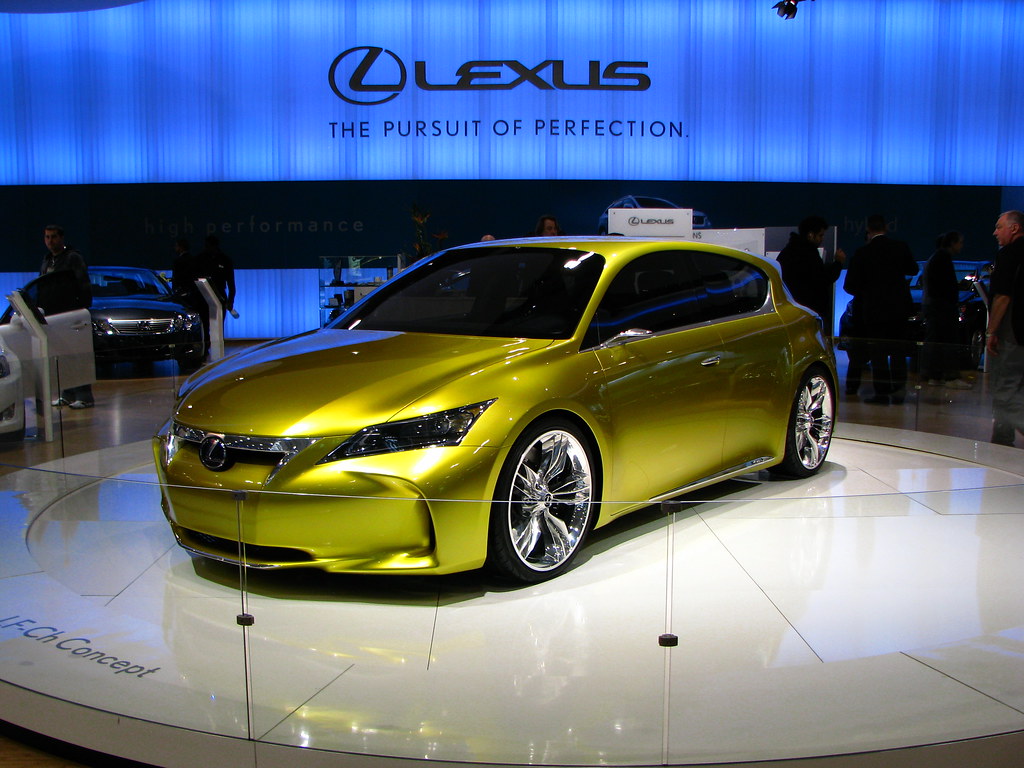
9. **Lexus ES**The Lexus ES stands as an outstanding selection for individuals who desire the epitome of luxury comfort without the common financial anxieties often associated with many high-end vehicles. Benefiting from its foundation in Toyota’s universally trusted engineering, the ES delivers a remarkably quiet and refined ride, all while maintaining surprisingly low demands for maintenance, a rare combination in the luxury segment.
The interior of the ES is meticulously finished, featuring plush seating, an abundance of high-quality materials, and thoughtful design details that are evident throughout the cabin. The noise insulation is exceptional, creating a calm and peaceful driving environment that effectively shields occupants from the hustle and bustle of the outside world. Furthermore, the suspension system is specifically tuned for comfort, effortlessly absorbing bumps and imperfections in the road, ensuring a smooth journey.
The engines powering the Lexus ES are engineered for both smooth performance and unwavering long-term reliability. They share many fundamental components with various Toyota models, a strategic choice that significantly helps to reduce overall maintenance costs when compared to its European luxury sedan counterparts. Consequently, repairs for the ES are generally straightforward, and necessary parts are considerably easier to source than for many competing luxury brands, simplifying the ownership experience.
Resale values for the ES remain impressively strong, largely because it has cultivated a solid reputation for being both luxurious and exceptionally dependable. Buyers in the second-hand market view the Lexus ES as a secure and prudent investment, confident that it will necessitate fewer repairs and incur lower costs over time than alternative premium options, thereby offering genuine peace of mind.
For drivers who seek a vehicle that flawlessly combines sophisticated comfort with the assurance of reliability, the Lexus ES is one of the rare luxury sedans that consistently proves its worth well beyond its initial years of ownership, providing a truly gratifying and financially sensible luxury experience.
Car Model Information: 2015 Lexus ES 350 Base
Name: Lexus ES
Caption: Lexus ES 350 (GSZ10)
Manufacturer: Toyota
Aka: unbulleted list
Production: June 1989 – present
Class: unbulleted list
BodyStyle: unbulleted list
Layout: unbulleted list
ModelYears: 1990–present
Categories: 1990s cars, 2000s cars, 2010s cars, 2020s cars, All-wheel-drive vehicles
Summary: The Lexus ES is a mid-size luxury sedan marketed since 1989 by Lexus, the luxury division of Toyota, across multiple generations, each offering V6 engines and a front-engine, front-wheel-drive layout. The first five generations of the ES used the Toyota Camry platform, while the latter generations are more closely related to both the Camry and the Avalon. Manual transmissions were offered until 1993, a lower-displacement inline-four engine became an option in Asian markets in 2010, and a gasoline-electric hybrid version was introduced in 2012. The ES was Lexus’s only front-wheel drive vehicle until 1998, when the related RX was introduced, and the sedan occupied the entry-level luxury car segment of the Lexus lineup in North America and other regions until the debut of the IS in 1999. The ES name stands for “Executive Sedan”. However, some Lexus importers use the name, “Elegant Sedan”. Introduced in 1989, the first generation ES 250 was one of two vehicles in Lexus’s debut range, along with the LS 400. The second generation ES 300 debuted in 1991, followed by the third generation ES 300 in 1996, and the fourth generation ES 300/330 in 2001. The first- through fourth generation sedans shared body styling elements with Japan-market Toyota sedans, and a domestic market equivalent, the Toyota Windom, was sold until the launch of the fifth generation ES in 2006. The word “Windom” is a combination of “win” and the suffix “dom” expresses a state of perpetual victory. The fifth generation ES used body styling marketed by Lexus as L-finesse and debuted in early 2006 as a 2007 model. The sixth generation ES debuted in the first half of 2012 as a 2013 model, and features increased cabin dimensions due to a longer wheelbase which is shared with the full-size XX40 series Avalon. Lexus has positioned the ES in the comfort luxury segment, with an emphasis on interior amenities, quietness, and ride quality, in contrast with more firm-riding sport sedans. Buyers seeking more performance-focused models are targeted by the Lexus IS and rival makes, with such models offering a sportier drive with differently tuned suspensions. In Europe, Japan and other markets where it was not available until the seventh generation model, the GS sport sedans occupy the mid-size category in the Lexus lineup until it was cancelled August 2020. In the United States, the ES has been the best-selling Lexus sedan for over fifteen years.
Get more information about: Lexus ES
Buying a high-performing used car >>>
Brand: Lexus Model: ES
Price: $17,785 Mileage: 95,622 mi.
Read more about: Buyer Beware: These 12 Crossovers Turn into Money Pits Past 80,000 Miles
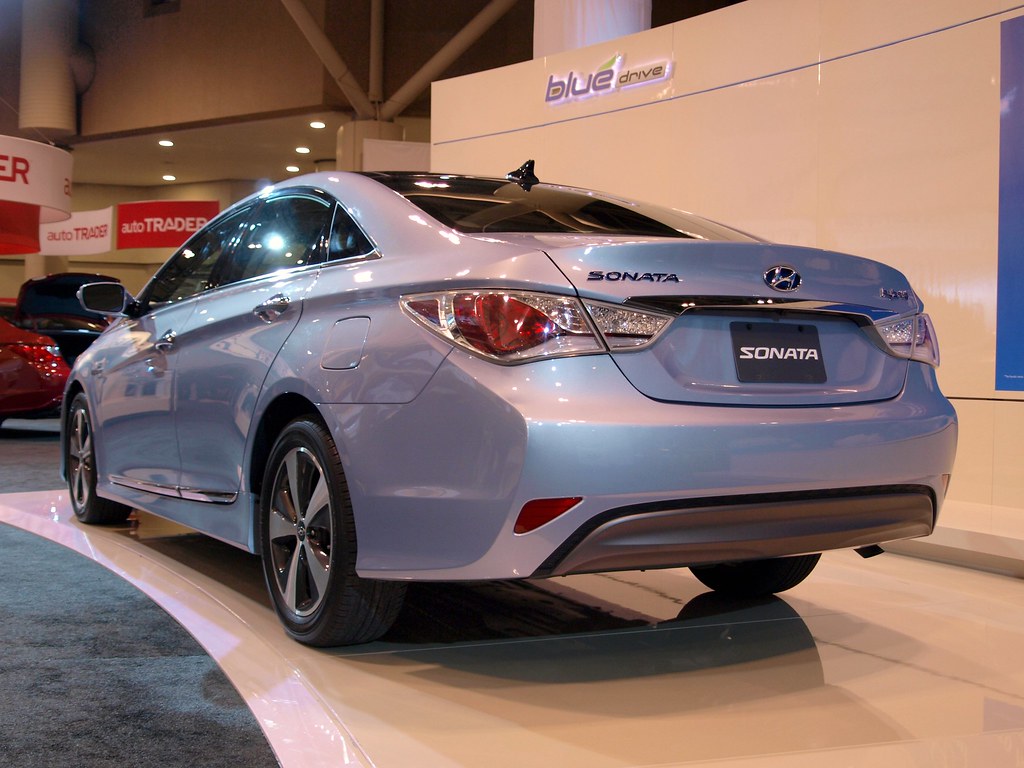
10. **Hyundai Sonata**The Hyundai Sonata has undergone a remarkable transformation over the past decade, evolving from a mere economy choice into a genuinely appealing and highly competitive mid-size sedan. Modern Sonata models are now celebrated for offering solid reliability, attractive contemporary styling, and a comprehensive array of comfort and advanced safety features, all presented at highly competitive prices, making it a compelling option for a broad range of buyers.
Stepping inside, the Sonata provides a refined experience, characterized by high-quality materials and a design aesthetic that masterfully balances practical function with contemporary style. Even the base models are notably well-equipped, frequently offering desirable features such as intuitive touchscreen infotainment systems, advanced safety protocols, and comfortable seating designed for five occupants, ensuring a pleasant ride for all.
Hyundai demonstrates its strong confidence in the Sonata’s reliability by backing the model with a generous warranty, which provides owners with an additional layer of assurance. The engines are meticulously tuned for efficiency, delivering commendable fuel economy without ever feeling underpowered, thus offering a satisfying balance of performance and economy. The car handles capably for everyday driving scenarios and maintains impressive stability at higher speeds, contributing to a secure driving experience.
Maintenance requirements for the Sonata are generally affordable, with parts being easy to source and service intervals proving to be straightforward and predictable. Recent reliability ratings for the model have been consistently strong, a factor that has significantly contributed to the Sonata achieving better resale value than it historically commanded, enhancing its long-term financial appeal.
For buyers who are seeking a harmonious balance of style, comfort, and dependable performance, the Hyundai Sonata consistently stands out as one of the superior choices currently available in the mid-size sedan market, offering a well-rounded and reliable ownership experience.
Sedans have maintained their vital presence in the automotive market because they successfully deliver a crucial balance of comfort, practicality, and driving enjoyment. Yet, the distinction between a sedan that will serve you faithfully for many years and one that becomes a drain on your finances often hinges critically on engineering quality, the ease of maintenance, and its long-term dependability.
Vehicles such as the Toyota Camry, Honda Accord, and Lexus ES have undeniably earned their stellar reputations by consistently proving themselves over decades in terms of both reliability and their ability to retain resale value. Opting for one of these models means you are far more likely to experience fewer unexpected repairs, enjoy consistently smoother rides, and maintain effective control over your overall ownership costs throughout the lifespan of the vehicle.
Conversely, sedans that are plagued by complicated engineering issues, require costly repair parts, or exhibit poor resale performance can rapidly transform into a significant financial burden. Models like the Chrysler 200 or Jaguar XE might initially captivate buyers with their appealing designs and enticing comfort features, but their documented histories of mechanical problems and higher-than-average maintenance costs position them as inherently risky investments for the average consumer.
It is a crucial point to remember that even securing an advantageous deal on the initial purchase price can quickly be negated by the accumulating expenses that follow. The primary takeaway for all car buyers must be to prioritize long-term value and reliability, rather than being solely swayed by a car’s immediate showroom appeal or a seemingly good upfront price.
Ultimately, a sedan should seamlessly integrate into your lifestyle, complement your driving habits, and align realistically with your financial expectations for not just the immediate future, but for many years ahead. Thoroughly researching model histories, diligently checking owner reviews, and crucially, having a trusted mechanic meticulously inspect any used option before committing to a purchase will provide invaluable assistance in helping you avoid unnecessary trouble and costly regrets.
Car Model Information: 2015 Hyundai SONATA SE
Name: Hyundai Sonata
Caption: 2024 Hyundai Sonata SEL (US)
Manufacturer: Hyundai Motor Company
Production: 1985–present
Class: Mid-size car
BodyStyle: sedan (automobile)
Layout: ubl
Predecessor: Hyundai Stellar
Categories: 1990s cars, 2000s cars, 2010s cars, 2020s cars, All Wikipedia articles written in American English
Summary: The Hyundai Sonata is a mid-size car that has been manufactured by Hyundai since 1985. The first generation Sonata, which was introduced in 1985, was a facelifted version of the Hyundai Stellar with an engine upgrade, and was withdrawn from the market in two years due to poor customer reaction. While the nameplate was originally only sold in South Korea, the second generation of 1988 was widely exported. The Sonata is currently manufactured in South Korea, China, and Pakistan. It was named after the musical term, sonata.
Get more information about: Hyundai Sonata
Buying a high-performing used car >>>
Brand: Hyundai Model: Sonata
Price: $11,485 Mileage: 59,515 mi.
Read more about: Accident-Proof Rides: Unveiling 14 Cars Secretly Engineered to Transform Even the Most Terrible Drivers into Confident Road Warriors
Making the intelligent choice of a sedan truly worth owning is fundamentally about combining practicality with proven reliability. By adhering to this principle, you effectively safeguard your finances, ensure genuine peace of mind on every journey, and fully capitalize on the comprehensive benefits of sedan ownership without falling prey to the trap of expensive repairs and persistent frustrations. The smart, consumer-focused move is to deliberately select models with well-established track records of dependability and to consciously steer clear of those with histories marred by unreliability. Your future self, and your wallet, will undoubtedly be profoundly grateful for such a prudent decision.

